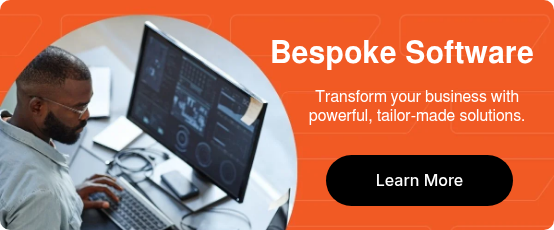Pros and Cons of Waterfall Software Development Explained
Every software development project starts with a crucial decision: how will it be built? The choice of development methodology can shape everything from budget to user experience.
Imagine a team is building an internal HR system for a large organisation with very specific compliance needs. The requirements are known in advance, the deadline is fixed, and the scope will not change. Each phase can be meticulously documented and signed off before the next begins.
Now compare that to a start-up building a new mobile app in a competitive market. The product needs to evolve with user feedback, timelines are tight, and flexibility is key. The project hinges on quick iterations, real-time adjustments, and ongoing collaboration.
“The key to choosing the right approach isn’t just about the project itself, it’s about the context around it. Timelines, risk appetite, regulatory demands, all of these shape whether structure or flexibility wins out,” says Colette Wyatt, CEO of Evolved Ideas.
Let's unpack what is a waterfall model to help you decide if it is right for your software development project.
What Is the Waterfall Model in Software?
The waterfall model is one of the oldest and most traditional approaches to software development. It follows a strict linear sequence of stages: requirements, design, implementation, testing, deployment, and maintenance. In this model, each phase must be completed before moving on to the next, with little room for revision once a stage is finished.
This approach is often favoured for projects with fixed requirements and clear outcomes. But as with any method, there are advantages and disadvantages of waterfall model.
Key Advantages of the Waterfall Approach
Let's start by unpacking the advantages of waterfall model in software development:
- Clarity and structure: Each phase is clearly defined, which makes the process easy to follow for teams and stakeholders alike.
- Documentation-focused: The waterfall model places strong emphasis on documentation at every stage, supporting knowledge transfer and accountability.
- Easier to manage: Because everything is planned upfront, timelines and budgets are often easier to estimate and control.
- Well-suited to stable projects: If the requirements are unlikely to change, this model helps maintain consistency throughout the development cycle.
While the waterfall model is a tried-and-tested method for linear development, it can be challenging for projects with evolving requirements.
Major Disadvantages of the Waterfall Model
Despite its strengths, there are clear disadvantages to using this method. So, what is the main drawback of the waterfall model? It's inflexibility. Once a phase is complete, revisiting or changing earlier work can be difficult and costly.
Other key limitations include:
- Limited adaptability: The model does not respond well to changes in requirements or market shifts.
- Late testing phase: Testing only occurs after development, which increases the risk of discovering critical issues late in the project.
- Minimal user involvement: Stakeholders are typically not engaged until later stages, which can lead to mismatched expectations.
- Not ideal for complex or exploratory projects: It assumes a full understanding of requirements at the beginning, which is rare in innovative or evolving projects.
Understanding the primary drawbacks of the waterfall model is essential for selecting the right methodology, particularly if your software development project demands adaptability.
When to Use the Waterfall Methodology
Despite its downsides, the waterfall method can still be a good fit for certain scenarios. It is most effective when:
- Requirements are fixed and unlikely to change.
- The project is short and straightforward.
- Regulatory or contractual obligations require detailed documentation.
- Stakeholders need a high level of predictability and control.
A practical way to choose a model for a software development project is to do a side-by-side comparison of different methods.
Waterfall vs Agile: Key Differences Explained
Waterfall and Agile represent two very different approaches to software development.
The waterfall model is sequential, while Agile is iterative. In Agile, development is broken down into sprints or cycles, with ongoing user feedback and regular adjustments.
Here’s a quick breakdown of key differences:
Structure
Waterfall: Linear and sequential
Agile: Iterative and flexible
Flexibility
Waterfall: Low
Agile: High
Customer involvement
Waterfall: Limited to initial and final stages
Agile: Continuous throughout
Testing
Waterfall: After development ends
Agile: Throughout development
Best suited for
Waterfall: Stable, well-defined projects
Agile: Dynamic or evolving requirements
Understanding the pros and cons of waterfall model versus Agile can help businesses align their development strategy with project needs.
Is the Waterfall Model Still Relevant Today?
The short answer: yes, but with caveats.
While Agile and hybrid models have gained popularity, there are still valid reasons to use waterfall, especially in industries like defence, construction, or healthcare, where documentation, regulation, and fixed outcomes are essential.
As Colette puts it: "Not every project demands constant iteration. Some benefit from the order and predictability that the waterfall model brings, especially when compliance or legacy systems are involved."
That said, it's important to regularly reassess whether the model still fits your evolving development environment.
Whether you're modernising legacy systems, launching a new product, or refining your development strategy, the right development model matters. To explore the best approach for your business, speak to the team at Evolved Ideas.
FAQs
How can I tell if my project is too flexible for the waterfall model?
If your project requirements are likely to shift based on feedback, market conditions, or internal strategy changes, then a linear approach like waterfall may cause bottlenecks. Flexibility is better managed with iterative methods like Agile or hybrid approaches.
Can the waterfall model be adapted for partial Agile practices?
While the waterfall model is inherently sequential, some teams build in review checkpoints or adopt “water-scrum-fall” hybrids, using waterfall for planning and Agile for delivery. However, this hybridisation depends on team maturity and project constraints.
What’s the risk of using waterfall for fast-moving or unknown product markets?
Using waterfall in highly dynamic environments can lead to misalignment between product and user needs. Since testing and feedback come late, products risk launching with outdated or incomplete features.

